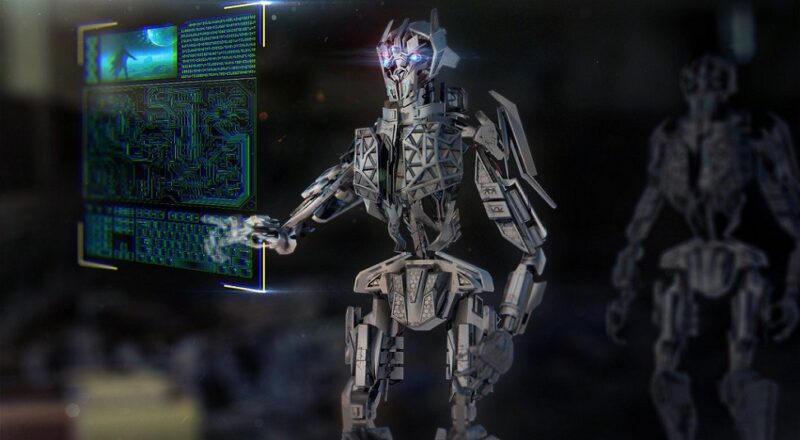There has been increasing implementation of robots in various industries across the globe due to their various perks concerning speed, productivity, efficiency, risk, and competition. The surging population around the world has significantly increased the consumption of food and beverages and adoption of automobiles among people. The use of cloud infrastructure in industrial robotics is enabling the development of more advanced and intelligent robots that can be remotely monitored and controlled. Thus, robots are extensively used in agriculture, food preparation, and automobiles.
People across the globe are increasingly becoming sick and contracting diseases, owing to the prevalence of rising air pollution, chronic diseases, decreased physical exercise, and adoption of sedentary lifestyle, especially among the millennials. Thus, the robots are also widely used in the healthcare industry to treat the distressing ailments among youth and the geriatric population.
Not only large-scale but also the small-scale industries are actively considering the adoption of innovative industrial robotics, owing to their conspicuous usage and production. There has been a significant surge in the application of industrial robotics and automation in the manufacturing sector over the last couple of years. By automating security tasks, security robots can free up human workers to focus on more value-added activities, such as quality control and process optimization. This is majorly due to the rising labor charge across the globe along with the unavailability of skilled professionals required in respective industries.
Thus, the demand for industrial robotics is expected to increase exponentially in the coming years. According to the report published by Allied Market Research, the global industrial robotics is expected to reach $116,848.7 million by 2030, with a CAGR of 11.7% from 2021 to 2030.
What is an Industrial Robot?
An industrial robot is an automated, programmable robot system that is adept at moving along three or more axes. It is a type of mechanical machine that is capable of performing various tasks automatically with the help of an input. These robots can be reprogrammed innumerable times, depending on its usage and industrial requirement. Some of the common applications undertaken by industrial robots are product inspection and testing, welding, packaging and labelling, painting, ironing, palletizing, and many more.
Four Benefits of Using Industrial Robots
The performance and reliability of industrial robots are remarkably driven by technological enhancements and innovation, especially in case of dominant industries such as automobile and food & beverage sector. Thus, advanced industrial robots are capable of performing various tasks with high precision and speed. Here are some of the advantages of using an industrial robot.
Increases Efficiency
Industrial robots are designed to perform multiple tasks with high precision and speed. They are capable of operating 24/7 at the maximum efficiency without any error. Thus, the industrial robots are effectively used to automate processes and further increase efficiency. Labors would crucially take a lot more time and resources to do the same tasks, considering the human error and fatigue.
Offers an Effective Return on Investment
Industrial robots appreciably minimize the total amount of waste generated within the production process, owing to its impeccable precision and minimized error. This saves an ample amount of raw materials, which can further be used for imminent production. Industrial robots can be used to monitor and maintain hard drives, helping to prevent hard drive failure and data loss. In addition, installation of industrial robots, considering their long-term operation and maintenance expenses, would be way cheaper than hiring a human worker to perform the same tasks.
Increases Profitability
Industrial robots are effectively capable of managing various tasks, and can even enhance the quality of the product whilst lowering its cost. Thus, they can substantially increase productivity and profitability at the same time. In addition, industrial robots keep up with the speed of production to meet the immense or immediate needs and demands of the customer. Hence, these robots appreciably increase profitability of the company.
Provides a Better Work Environment
Industrial robots can perform highly laborious and repetitive tasks. Hence, they ensure the safety of the workers by performing tasks that are deemed to be too dangerous for workers. They incessantly engage themselves in operating heavy machineries that requires a great deal of precision, strength, and skill. Thus, by delegating minacious tasks to industrial robots, workers are secured against potential hazards in the workplace.
Future of Industrial Robotics
The outbreak of COVID-19 has had a negative impact on industrial robotics market, owing to the occurrence of lockdowns in various countries across the globe. Lockdowns led to the closure of various end-use industries and disrupted their supply chain. This consequently decreased the demand for industrial robots. However, the demand for industrial robots will tremendously prosper with eased lockdown restrictions.
This is attributed to companies across the globe that are actively getting impulsive to adopt automation in their factories to decrease overall cost of production, meet consistent demand of the customers, and maximize productivity and profitability. Persistent technological advancements along with the implementation of industrial internet of things (IIOT), artificial intelligence, and machine learning in industrial robots are expected to create immense opportunities for the growth of the global industrial robotics market and pave the way for a better future.
Author’s Bio:
Shreeras Shetty is currently working in the content writing industry and has a Bachelor’s degree in management studies specializing in marketing. He is passionate about writing and is gaining significant experience in the Market Research Industry. Outside the office, Shreeras is actively engaged in recreational activities like playing football, trekking, traveling, and athletics.
